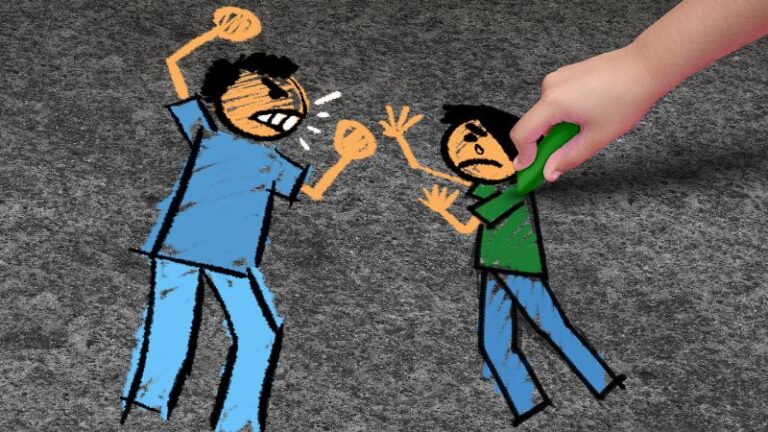We must stop and prevent a culture of bullying in schools. Teachers do not only teach us to think. It is equally important to guide students on how to behave. We may not remember the names of dead heroes and the dates of the biggest events in history. But we won’t forget how bullies made us feel about ourselves.
I have many good memories of school. I learned most of what I know about relating with and leading people in school. I was not the genius type, but I got elected for class officership every time.
It was also in school that I learned the ugly side of life. Unfortunately, bullying is a large part of that nasty side.
When I was a school teacher, I knew of bullies who got good grades in Christian Education. I heard of students who used their newly learned skills in judo against their classmates.
I also knew power-tripping teachers who found it entertaining to poke fun at some slow students. They never called what they do bullying, for they were only “having fun.” But bullying is bullying even when called a different name.
Republic Act No. 10627 requires all elementary and secondary schools to adopt policies to prevent bullying.
But I am yet to read a study on how our schools are doing it.
Allow me to give the following suggestions to teachers and principals. Unfortunately, I could not speak of these suggestions when I was teaching. But our kids are worth it, so let me share these ideas now.
Launch an anti-bullying campaign.
The anti-bullying campaign must involve awareness, education, and engagement. The campaign does not target persons who bully, for they are victims to some extent.
I recommend that you do it a week or two after the school opening. You ought to tell students that bullying is unacceptable in all its forms and names.
You can teach students how not to be a bully, that it is not okay to be a bystander, and there are ways students can do to combat it.
During your Anti-bullying Week, you may include the following activities.
- Get the class to research bullying, and present a role play on how it can be prevented or stopped.
- Have an anti-bullying slogan-making contest.
- Encourage students to share past experiences with bullying.
- Place a box or website where students can anonymously report bullying.
- Invite a speaker from an anti-bullying advocacy group.
- Have a spoken-word competition that promotes anti-bullying.
- Hold story-telling sessions. PDi has done this. How Cris Villonco overcame bullying.
- Present a short film.
- Ask every student to contribute an idea on how to combat bullying, collate them into a book, or publish them on your school website.
- Provide assertive training for students.
- Make teachers aware of behaviors that turn them into bullies.
- Provide training in anger management.
- Review the school’s anti-bullying policy.
- Have talks on enduring Filipino values like malasakit, pakikipagkapwa-tao, and respect.
- Have a poster-making contest on the destructive effects of cyberbullying.
- Educate kids about online safety.
In elementary grade, I knew of kids who got beaten during recess. We can only watch, praying that we won’t be the next victims. There was no anti-bullying law during my time.
But even these days, I seldom hear of schools launching a campaign to ensure that no one gets bullied.
Schools need to launch the campaign many times a year to emphasize that humiliating and dehumanizing others are not cool.
Promote interactions and vulnerability.
In my line of work, I often get requests to train employees on assertiveness and interpersonal communication. I get paid for teaching people how to manage their interactions with other employees.
Many of these communication challenges started in school. You can help students develop the skills while they are still young.
Students need to learn that it is okay to be open and honest.
In some team-building programs, trainers conduct bull sessions. I do not recommend such an activity for adults. Likewise, I won’t recommend it for kids.
I recommend making them realize that it is okay to be vulnerable. It is okay to tell people how they feel. You can use some of my team-building activities in schools too.
I use Fantasticat to encourage adults to talk about their strengths, talents, aspirations, and fears. It does not have to be a cat, of course. Instead, I ask them to think of animals representing who they are. The conversation I get from this is so authentic.
At other times, you can ask them to be in a circle. Tell them to pick anything from their bags that represent their feelings. Discussions do not have to be all about school.
I encourage my students to write daily in their journals. I provide them with prompts that help them express themselves. Because of these journals, students learned how to express themselves.
You can also come up with your version of 9 Dimensions.
Keep in mind that your purpose is to encourage kids to interact to become better adults.
Train bystanders to become advocates.
Bullying continues because many of us choose to be bystanders. What we can do in school is train our students to become advocates against bullying.
We must teach children about responsibility. In my book, responsibility is the ability to respond and own the impact of our response on others.
The typical response of students is to play blind when someone is bullied. Or, sometimes, some choose to laugh and mock the victims for fear that they’ll be next.
Even if so many people can stop the bullies, most people choose to become bystanders. Unfortunately, adult bystanders often try to ignore getting involved when someone is in distress.
It might be because they did not know how to escape from the bystander effect.
The bystander effect is not a Filipino trait. It happens everywhere. I think it is because untrained people know only two kinds of response: flight and fight.
The third option is to be responsibly assertive.
The bystander effect refers to a phenomenon in which more people are less likely to help a person in distress. In this case, many students, just like adults, won’t help the bullied,
It is as if they expect others to do something they refuse to do.
Students know that bullying is unacceptable, but they will not do anything about it because they don’t feel they’re responsible. They play safe. They don’t want to be involved.
What we can do in school is to train our students that it’s not okay to watch when bullies hurt someone. They need to understand that if we allow bullies to rule, we make it alright for others to do nothing when we need their help.
Schools need to teach our kids what they are going to do. They need to believe that bystanders can become champions. They can stop bullying by not allowing bullies in schools.
If you’re tired of knowing but not doing…
Let’s make one shift easier to live daily.
→ Shift Experiences










